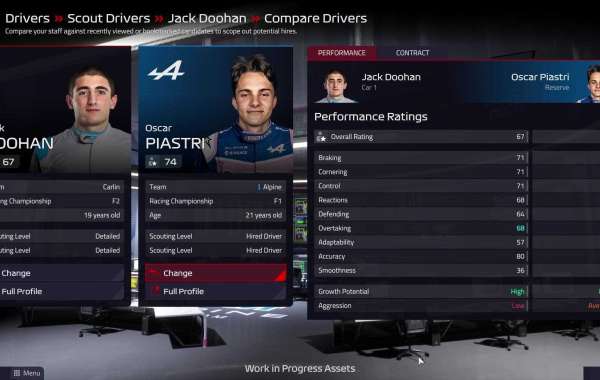
F1 Manager 2022 Setup Guide for Beginners
F1 Manager 2022 is the newest racing game on the market, and it is sweeping the nation. Frontier Developments has mainly met the extremely high expectations that were placed upon them. As a result, several racing enthusiasts are assuming the role of team principal. However, it is not as simple as it may appear!
One of the most challenging features of F1 Manager 2022 is the free practice sessions. Specifically, it can be difficult, to say the least, to locate an excellent arrangement. If you've been trying to identify 'optimals,' here are some starting tips to assist you. Here is the best F1 Manager 2022 car setup guide.
F1 Manager 2022 Setup Guide - Don't Waste Time
So, you've arrived to the track, and it's time for the first practice session. What should be your initial step? Before entering the session, ensure that you are prepared. By modifying the configurations of the two drivers before to the start of practice, you may avoid losing up to four minutes at the beginning of the session. In Formula 1, every second is crucial.
Beginning with the default 15-lap stint is typically a wise choice. This affords the majority of drivers sufficient time to form an opinion on every aspect of their setup. Only at the very end of the session will you need to change your stint duration. If there is insufficient time for a 15-lap stint, there is no use in spending extra seconds refueling the car.
Similarly, do not modify your setup if there are only a few minutes remaining in the session; you will not have enough time to receive feedback and your driver will lose valuable acclimatization time.
Utilize Both of Your Drivers
This does not simply mean remembering to send both drivers out onto the circuit. Hopefully, you've mastered it at this point. Rather, it is prudent to begin FP1 with two drastically different configurations for each driver. Thus, you will essentially receive twice as much input as you would have otherwise.
Maximizing your track time will provide you with additional opportunities to adjust your setup. Therefore, you will have a greater chance of hitting the sweet spot. Keeping an eye on your stint durations is another approach to guarantee that your vehicles are on the road for as long as possible.
If you send Sebastian Vettel out with no downforce and raise Stroll's wing angles to the maximum, you will have a better understanding of the sweet spot. If both drivers state that the configuration is "poor," you will know that it should be somewhere in the center. If Vettel deems his setup to be "good," you will know to reduce Stroll's car's wings.
Obviously, you should not push things to the extreme. Having values outside of the green zones is useless. However, one at either end of each green zone is the most efficient approach to collect the most data.
Should You Let Them Inside?
Let's discuss if and when you should bring in drivers. When it is early in the weekend and your driver has created input on all five components of the setup, it is advisable to bring them back to the pits immediately. This manner, the configuration may be altered as soon as the information is gathered, and you won't lose time with a driver driving about with a 43% comfort setup.
It closer to the ideal settings, you should consider leaving drivers out more. If your setup is at 94% and you've just made a little adjustment to the toe angles, you should let your drivers finish their stints to maximize track acclimatisation.
The regulation is essentially as follows. When you have a poor or ambiguous setup, you should bring drivers in as soon as they have 5/5 feedback for modifications. Whenever possible, you should prioritize track time above fine-tuning when your setup is above around 85 percent comfort. There is no use in shortening a shift to spend four and a half minutes adjusting the anti-roll bars by one degree.




